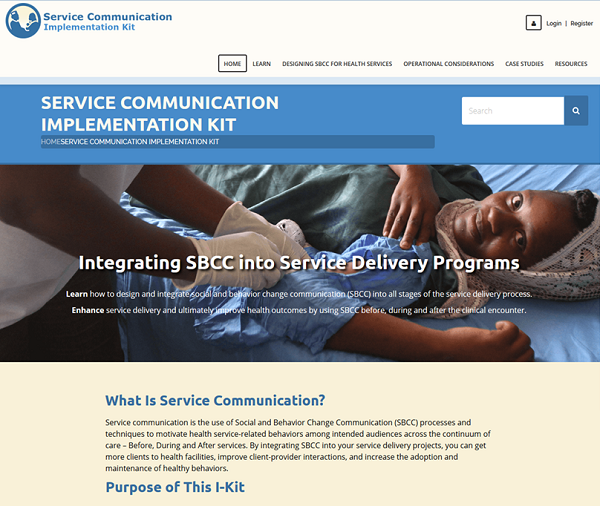How can we get more clients to health services? What can we do to improve client-provider interactions? How can we increase the adoption and maintenance of healthy behaviors? These are questions we in the health service field grapple with on a regular basis. Solutions to these complex problems are necessarily multi-faceted and multi-disciplinary, but social and behavior change communication (SBCC) plays a key role in influencing the norms, attitudes, knowledge, skills, self-efficacy, and behaviors that contribute to positive health outcomes along the continuum of care. Service communication – the use of SBCC processes and techniques to motivate health service-related behaviors – can improve health outcomes across the continuum of care: before, during, and after services. It can help increase demand for and uptake of services, and improve consistent long-term maintenance of healthy behaviors. But in order to achieve those outcomes, service communication interventions must be high quality and strategic. Effective interventions also require strong coordination between SBCC and service delivery partners
To help service delivery project managers (and their SBCC counterparts) effectively use service communication to enhance the impact of their projects, CCP’s Health Communication Capacity Collaborative (HC3) project designed an Implementation Kit (I-Kit) on Service Communication. The I-Kit contains:
- Background information to help users understand key service communication concepts, programmatic approaches and the evidence for using service communication
- Step-by-step design guidance on designing SBCC activities and materials in a health service context
- Coordination guidance that highlights key principles and models for effective coordination between service delivery and SBCC partners
- Case studies that showcase examples of projects that have successfully used service communication to improve servce outcomes
- Worksheets and resources to help users apply service communication principles and learn more about service communication
Upon completion of the I-Kit, users can choose to receive a certificate. Through this I-Kit HC3 hopes that project designers and managers will be better equipped to integrate SBCC into services, either through direct design and implementation of service communication interventions, or through coordination with an SBCC partner.
This post was written by Heather Hancock, Johns Hopkins Center for Communication Programs (CCP) Senior Program Officer. The Health Communication Capacity Collaborative (HC3) is a five-year, global project funded by USAID and led by CCP. It is designed to strengthen developing country capacity to implement state-of-the-art social and behavior change communication (SBCC) programs. Learn more at www.healthcommcapacity.org.





